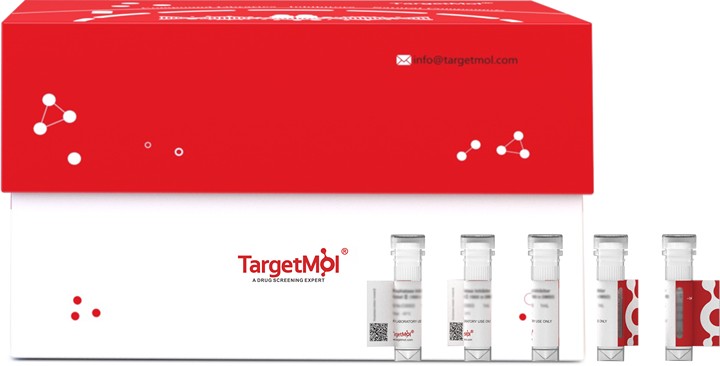购物车
全部删除  您的购物车当前为空
您的购物车当前为空
别名 Proprotein convertase subtilisin/kexin type 9, PCSK9, NARC1
PCSK9 Protein, Human, Recombinant (His) is expressed in HEK293 Cells. The accession number is Q8NBP7-1.

PCSK9 Protein, Human, Recombinant (His) is expressed in HEK293 Cells. The accession number is Q8NBP7-1.
| 规格 | 价格 | 库存 | 数量 |
|---|---|---|---|
| 5 μg | ¥ 619 | 现货 | |
| 10 μg | ¥ 987 | 现货 | |
| 20 μg | ¥ 1,680 | 现货 | |
| 50 μg | ¥ 3,380 | 现货 | |
| 100 μg | ¥ 4,970 | 现货 | |
| 200 μg | ¥ 7,330 | 现货 | |
| 500 μg | ¥ 12,300 | 现货 |
| 产品描述 | PCSK9 Protein, Human, Recombinant (His) is expressed in HEK293 Cells. The accession number is Q8NBP7-1. |
| 生物活性 | Immobilized Human PCSK9, His Tag at 2 μg/ml (100 μl/Well) on the plate. Dose response curve for Anti-PCSK9 antibody, hFc Tag with the EC50 of 0.13 μg/ml determined by ELISA (QC Test). Human LDLR, His Tag immobilized on CM5 Chip can bind Human PCSK9, His Tag with an affinity constant of 0.35 nM as determined in SPR assay (Biacore T200). |
| 研究背景 | Human Proprotein Convertase Subtilisin/Kexin Type 9 (PCSK9) is a secretory subtilase belonging to the proteinase K subfamily. PCSK9 is synthesized as a soluble zymogen that undergoes autocatalytic intramolecular processing in the ER , the pro domain and mature chain secrete together through noncovalent interactions. PCSK9 binds with low-density lipoprotein receptor (LDLR) and plays a major regulatory role in cholesterol homeostasis. Inhibition of PCSK9 function by preventing PCSK9/LDLR interaction is currently being explored as a means of lowering cholesterol levels. PCSK9 also binds to apolipoprotein receptor 2 (ApoER2), and play a role in the neural development. |
| 种属 | Human |
| 表达系统 | HEK293 Cells |
| 标签 | C-His |
| 蛋白编号 | Q8NBP7-1 |
| 蛋白构建 | Gln31-Gln692 |
| 蛋白纯度 | > 95% as determined by Bis-Tris PAGE;
> 95% as determined by HPLC |
| 蛋白性状 | Solution |
| 缓冲液 | Supplied as 0.22μm filtered solution in 20mM PB, 300mM NaCl, 10% Glycerol (pH 7.4). |
| 别名 | Proprotein convertase subtilisin/kexin type 9, PCSK9, NARC1 |
| 内毒素 | < 1.0 EU per μg protein as determined by the LAL method. |
| 分子量 | Due to autocatalytic cleavage, the protein release the pro-form (59 kDa) and mature form (14 kDa). Due to glycosylation, the protein migrates to 65-68 kDa (pro-form) and 15kDa (mature form) based on Bis-Tris PAGE result. |
| 密度 | no data available |
| 颜色 | White |
| 物理性状 | Solid |
| 运输方式 | In general, Lyophilized powders are shipping with blue ice. Solutions are shipping with dry ice. |
| 存储 | Lyophilized powders can be stably stored for over 12 months, while liquid products can be stored for 6-12 months at -80°C. For reconstituted protein solutions, the solution can be stored at -20°C to -80°C for at least 3 months. Please avoid multiple freeze-thaw cycles and store products in aliquots. |
对于不同动物的给药剂量换算,您也可以参考 更多